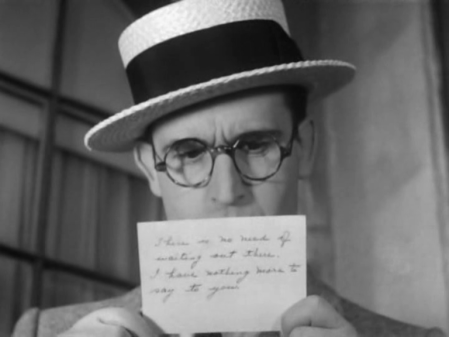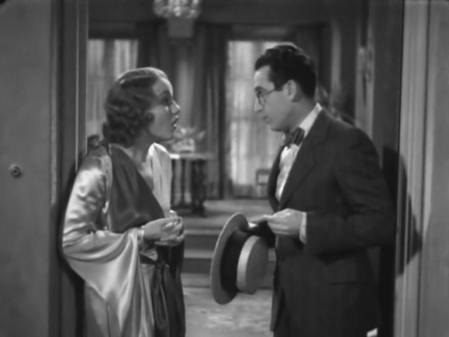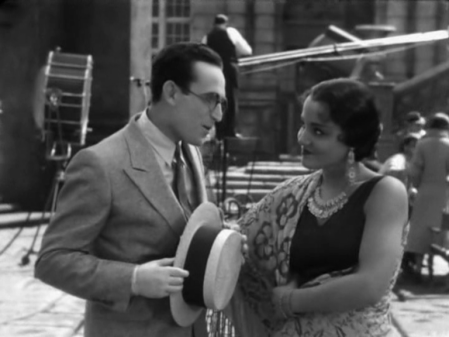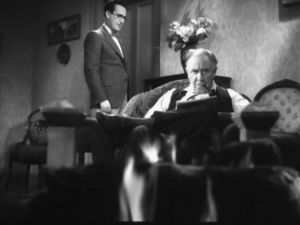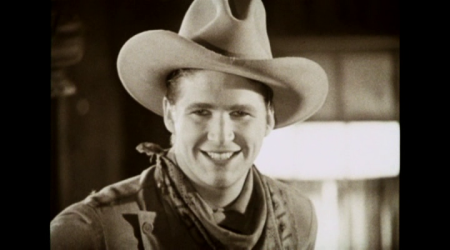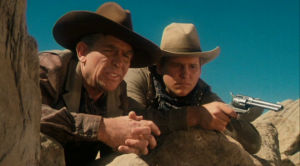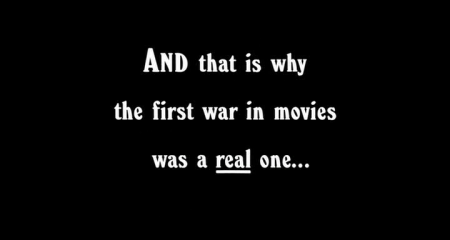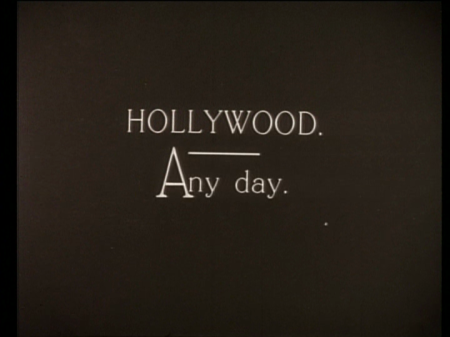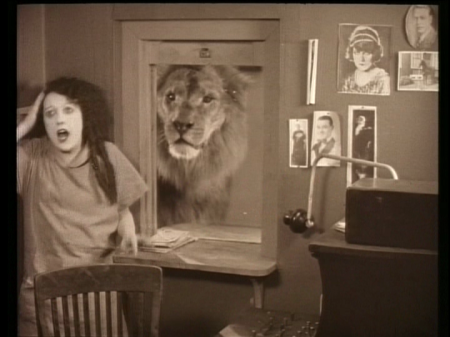So: Chaplin resisted talking, and even as late as THE GREAT DICTATOR (1939) was carving out sections of his films which could work as pantomime. (But people don’t acknowledge the extent to which Chaplin embraced and experimented with sound — just not dialogue). Keaton lost control of his career when sound came in, due to the tyranny of the screenplay, Louis B. Mayer, and the bottle. Harold Lloyd was the happiest case, remaining fairly productive until 1937, making some good talkies, maintaining the visual gags he was known for an augmenting them with verbals. The only thing lost is the ability to undercrank, which robs the action of that lighter-than-air, faster-than-a-speeding-bullet quality it can have in silents.
I really like Leo McCarey’s THE MILKY WAY, especially the scene where Harold has to transport a small horse (as I recall) in a taxi cab without the cabbie realising. Harold alibis the occasional whinnying sounds by grinning maniacally, doing his best to look like the kind of man who WOULD whinny in the back of a taxi.
We ran MOVIE CRAZY (1932) after a hot tip that if we enjoyed Constance Cummings in SEVEN SINNERS, which we did, we should see this one. And how!
Half of the plot is a straight reprise of MERTON OF THE MOVIES, filmed by the same studio the same year under the title MAKE ME A STAR. Deja vu must’ve been a common sensation in those days. Both version suffer from the same problem, the hero being a delusional hopeful who wants to be a movie star. Rooting for his aspirations when he clearly has no talent is tough, and in both cases the filmmakers try to enlist our sympathy by pouring troubles on the hero’s head — Harold’s character even acquires the nickname “Trouble.” Harold wasn’t inherently a lachrymose type, and most of his stories are American success stories about conquering adversity — not too much time for pathos. His best protagonists gain sympathy while keeping busy. So that aspect of the film isn’t too great.
The other half of the film, loosely connected to it, is the romantic triangle between Harold, Constance Cummings, and Constance Cummings. Harold meets CC twice, once in black wig and costume as a vampish senorita, once in civvies. He doesn’t realise it’s the same dame. Confused by a cunningly contrived chain of circumstance, he comes to believe the dusky damsel fancies him, whereas he does actually stand a chance with the blonde version — but keeps ruining his chances by flirting with her alter ego, thinking she’ll never know.
Cummings is just awfully good here. First she has to make us believe she’s taken a shine to Harold’s no-hoper. Suspending our disbelief requires Herculean efforts: in the end, we can say that she plays it magnificently, but the task is not really a possible one. It’s a bit like a CGI special effect, immaculately rendered with photorealist care, but inherently unbelievable, like all those bits in modern action movies where heroes survive colossal death plunges. Nobody could possibly do it better than Cummings, and the commitment is impressive, but it doesn’t quite result in a success. Harold is penniless, accident prone, talentless, and his self-belief comes across not as admirable but as unjustified arrogance tinged with insanity. But everything else Cummings is given to do, she does with equal commitment, and that stuff works great.
Apart from some very nice gags, scattered a little too far apart, the movie also maintains interest with an elaborate, spectacular shooting style. There are graceful, sweeping crane shots, particularly one which explores a movie set representing a ship at sea, where the camera swings from one position to another, guiding us through the geography of the scene about to unfold and building a fine anticipation. Occasionally, the visual ambition gets a bit carried away with itself, as in one of those “Santa POV” shots, filmed from inside the fireplace, but most of the elaborate moves and angles are more tasteful and effective, as well as being striking.
“Oh no, Dad’s on fire!”
That ship scene leads to an impressive knock-down fight between Harold and his nasty romantic rival. It’s quite funny, visually grand, and mainly it’s a tremendous release of energy as Harold stops being pathetic and takes care of business. I don’t really like the idea that our hero has to beat the living crap out of someone else to prove he’s a man, but if ever a plot needed a violent drubbing to shake it from the doldrums, this one did.
Come for Harold, stay for Constance, and then fall in love with Harold again, eventually.
